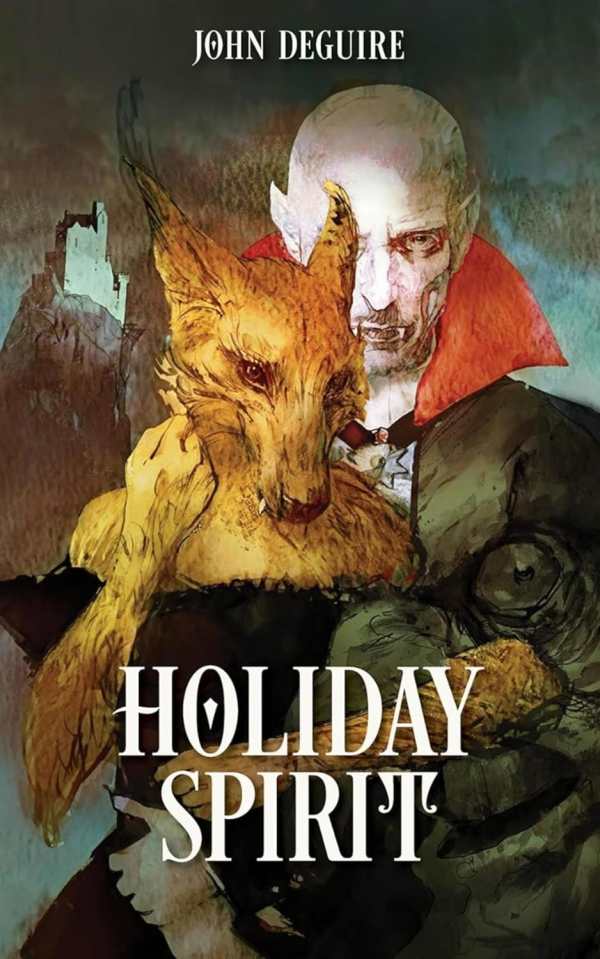
Holiday Spirit
Outcasts and monsters in love struggle to triumph over evil in the revealing horror novel Holiday Spirit.
Both violent and empathetic, John DeGuire’s novel Holiday Spirit is populated by a pantheon from the history of horror novels, used to explore human beings’ fear and hatred of outsiders.
Count Dracula and his werewolf wife, Aoife, are living a quiet life in Vermont when local children go missing after Halloween. Local police are unable to solve the case, and the townspeople blame the couple. To clear their names, Dracula and Aoife enlist the help of their friends Saul Frankenstein, Dr. Jekyll, and invisible Ralph Ellison. The group has to defeat a witch, Bridgett, and her minions, who include a swamp monster, an Egyptian god of the dead, and a neo-Nazi. The villains sow fear, rampaging against the townspeople.
The stream of mythological and literary characters in the novel is steady, and each iconic character comes with their own well-established backstory. Here, they have varying success at finding places for themselves within general society. Frankenstein’s monster, for example, is a fire captain who seeks to overcome his fear of flames through aversion therapy, while Ralph Ellison and H. G. Wells’s invisible man combine into one, representing the pinnacle of the outcast; he also works as a university professor and has an endless catalog of phobias. Indeed, he and a high school student trade lengthy names for specific phobias, such as hippopotomonstrosesquippedaliophobia, a fear of long words. One character is described as a snollygoster, which refers to a person, often a politician, without principles. And the setting is atmospheric, as with a town bookstore that “held a musky charm. At midday, the light shone through the storefront window, taking just a bit of chill out of the fall air.”
The chapters are short and swift, but their scenes of blood and gore are spectacular. A half-fish, half-man creature rips a woman’s face from her skull and chews it in front of her; elsewhere, Anubis, in mummified form, cleaves a daycare teacher in two, and the descriptions are gruesome. In comparison, the book’s historical digressions obscure the story’s center, which is consumed by examinations of divided political landscapes, xenophobia, and flirtations with fascism. These themes pair well with the book’s more fundamental monster-tale elements, including fear as the result of a lack of understanding.
Holiday Spirit is a delightful, bloody, and complex horror novel that uses classic characters to explore the nature of fear.
Reviewed by
Ben Linder
Disclosure: This article is not an endorsement, but a review. The publisher of this book provided free copies of the book and paid a small fee to have their book reviewed by a professional reviewer. Foreword Reviews and Clarion Reviews make no guarantee that the publisher will receive a positive review. Foreword Magazine, Inc. is disclosing this in accordance with the Federal Trade Commission’s 16 CFR, Part 255.
